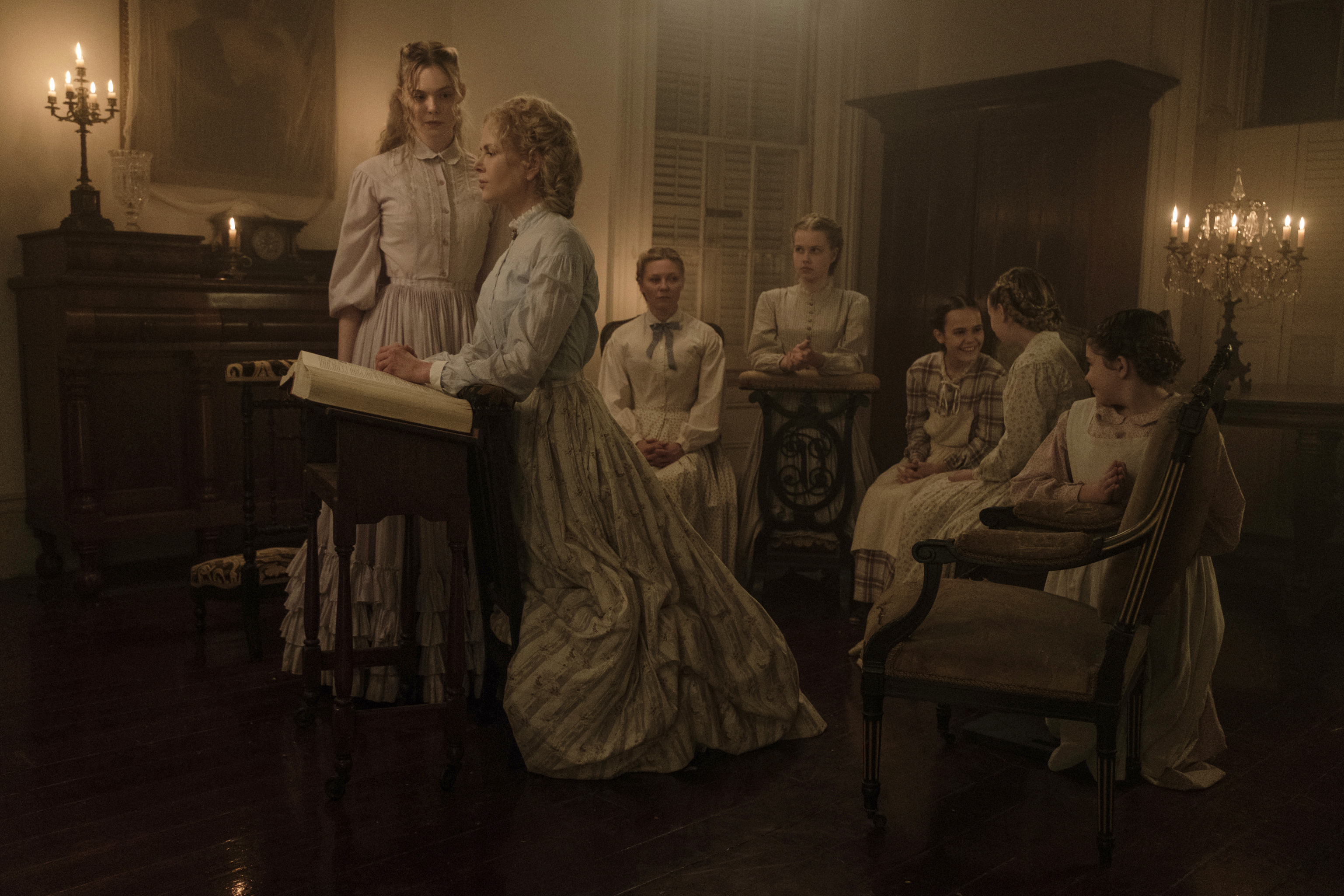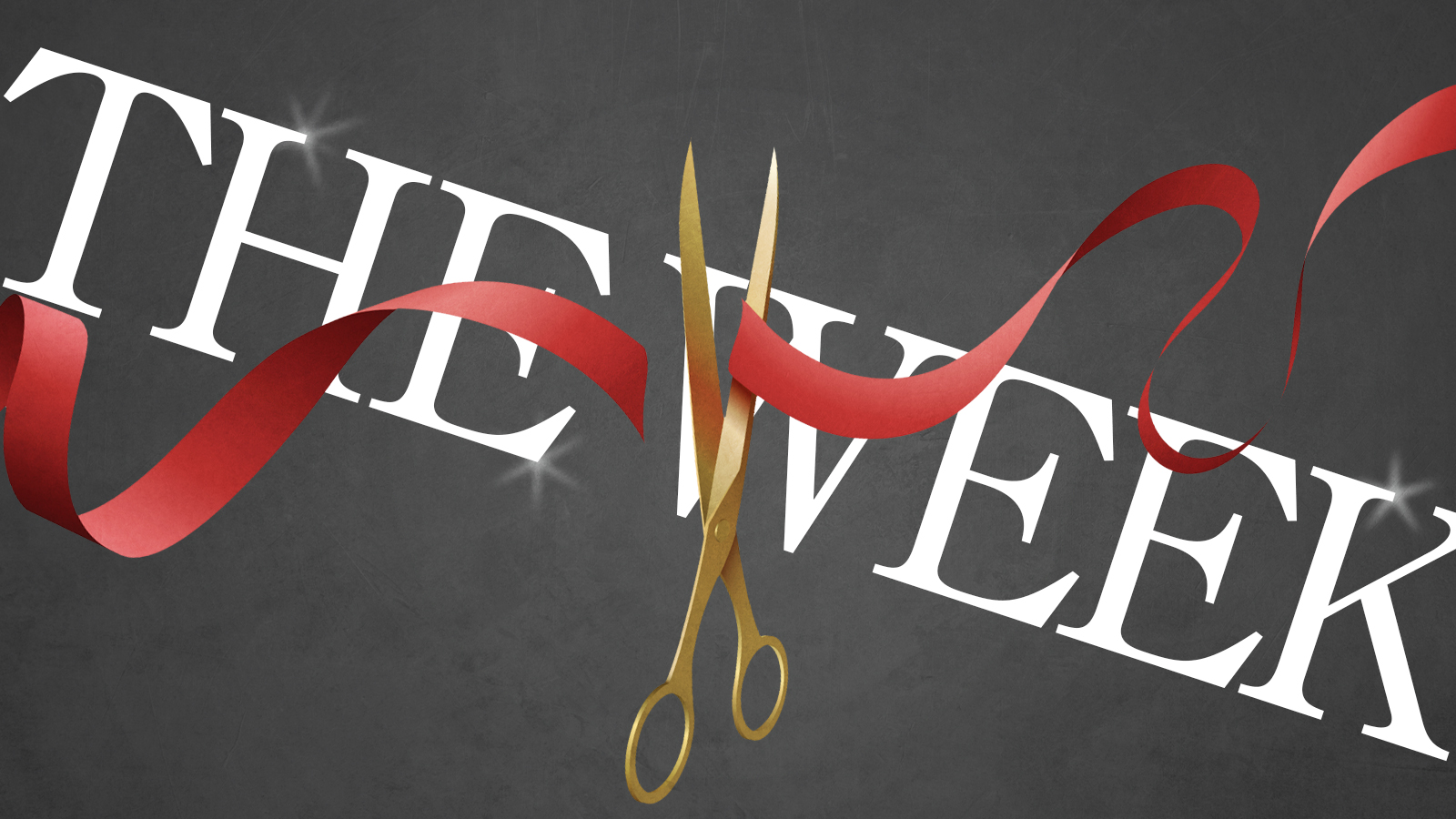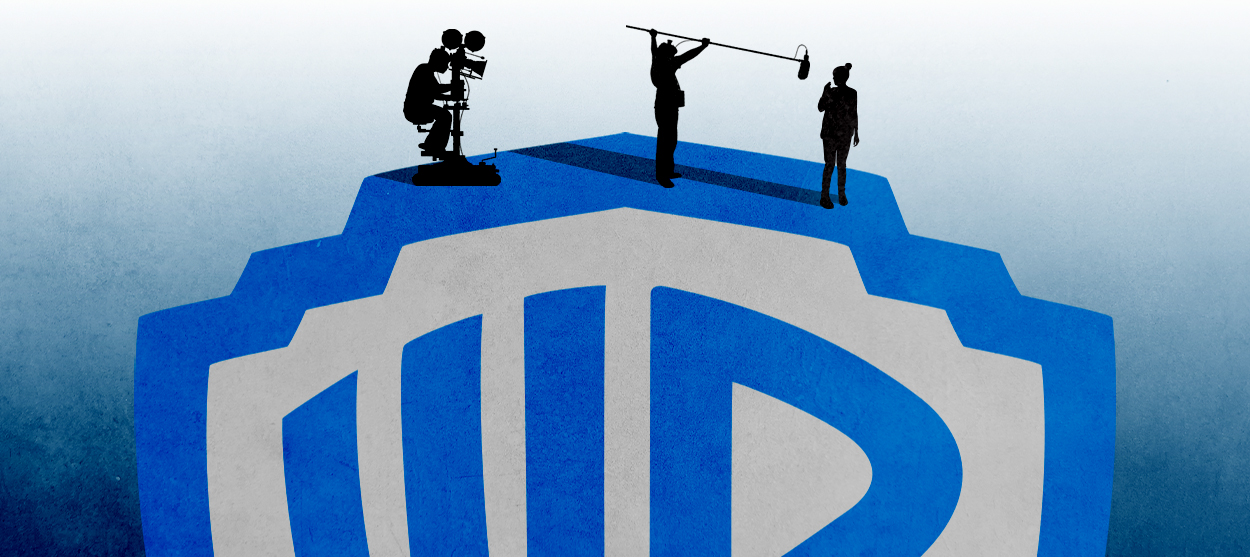How Sophia Coppola's The Beguiled castrates the original
In turning a cheesy sexscapade into a gory Jane Austen novel, Coppola surgically removes the most provocative material


The Beguiled is an unexpectedly gauzy remake of the fleshy film on which it's based. Sofia Coppola's take on Don Siegel's pulpy 1971 adaptation of Thomas P. Cullinan's novel — about a wounded Union soldier who ends up a patient-cum-prisoner at the Seminary for Young Ladies in the war-torn South — is broadly faithful while being a great deal more, well ... polite. There's no apparent interest in directorial one-upmanship, no effort to intensify the original's shock value. Quite the contrary: Coppola almost surgically removes Siegel's most provocative material. There's no kiss between Clint Eastwood and a 12-year-old to kick things off. Gone is the erotic threesome dream, the brother-sister love, the enslaved woman fighting off a rapist. While these excisions don't seem punitive or vengeful, neither do they quite succeed at mending the original.
In place of all that missing carnality, the film offers: a dress that ever so slightly displays the shoulders. A borrowed pair of pearl earrings. A child's myopic mushroom-hunt that pulls you in so deep that you flinch too when she spots a man.
If Siegel's film was billed as a cheesily literal battle of the sexes, Coppola's remake strains the pulp without losing the lust. Gentility backfills the original's prurience. Even the visuals seem corrected, inverted: Take Geraldine Page, who in 1971 played Martha Farnsworth (the proprietor of the Seminary for Young Ladies where the action happens) with a messy, overripe softness. In Nicole Kidman's hands, the character is stock-straight, prayerful, pointed. The opposite is true for Miss Edwina, the schoolteacher: As played by Elizabeth Hartman, she was gaunt and brittle, but Kirsten Dunst plays her lush, lumpy, and sad.
The Week
Escape your echo chamber. Get the facts behind the news, plus analysis from multiple perspectives.

Sign up for The Week's Free Newsletters
From our morning news briefing to a weekly Good News Newsletter, get the best of The Week delivered directly to your inbox.
From our morning news briefing to a weekly Good News Newsletter, get the best of The Week delivered directly to your inbox.
As for John McBurney — the doomed hero of the original whom Eastwood portrays as a manipulative, lying cad — Colin Farrell plays him as more charming, more explosive, but so much less manipulative that the plot almost comes undone. The Beguiled is about a charmer who thinks he can do what he wants with the ladies to whom the title refers. He's mistaken. But in Coppola's film, the beguiler just isn't as obviously calculating as Eastwood played him; Farrell's efforts at woman-wrangling resemble the ladies' sly overtures in their hopeful subtlety, but because he's a man, it scans differently. He seems more desperate than conniving, to the point that Corporal McBurney's sometime status as hero and protagonist slips completely away.
This was obviously deliberate. "I thought it'd be interesting to tell the same story, but flip it to the women characters' point of view — the idea of these women cut off during that time, left behind during the war," Coppola told The Hollywood Reporter of watching Siegel's film. That difference tells. In lieu of an "iconic" shot of a nubile woman's behind in the 1971 original, Coppola's remake features long, lingering close-ups of parts of Colin Farrell as his wounded body is washed. More important than the content is the implied viewer. Who's watching? How does that develop character or affect the scene?
Let's consider that famous derriere: In the 1971 film, the context in which it's seen amounts to an amusingly coarse final insult to the repressed witness who expected Eastwood's character to come to her bed. Compare that to Coppola's cinematic blazon of Farrell's body. The camera tracks the Puritan gaze of Nicole Kidman's Martha Farnsworth. She's tasked with cleaning up the wounded Yankee. Philippe Le Sourd films Farrell such that we can't help but ogle her unconscious charge along with her. It's a funny subtext to her stern Christian duty, a nervy jitter that we're forced to share. As the rag creeps closer and closer to Farrell's groin, the camera fixates on the texture of the lace around his underwear. We don't see much. But we do see Kidman splashing her face with cold water after and staring into the mirror with an inscrutable expression.
The 1971 film ogled Eastwood a little too, of course. Martha dreams that she and Edwina have a threesome with a bare-chested Eastwood. At one point, Martha and Edwina kiss.
A free daily email with the biggest news stories of the day – and the best features from TheWeek.com
It takes a very particular sense of humor to crop out so much of the shocking stuff for which a genre film is remembered, just as it takes a specific comedic mind to cast Nicole Kidman — easily one of the most beautiful women in the world — as a frumpy sex-starved matriarch. That's the point: Coppola rewrites The Beguiled as a black comedy of manners that renders the high-strung theatrics of the original a little ridiculous. (If you haven't seen the 1971 previews for the film, I recommend it, if only for gems like "these man-deprived women, these man-eager girls.")
Kidman rises to that challenge by rescuing Martha from gothic caricature. She offers a dry stiffness that chafes comically against Farrell's charm (and its amusing effects on the girls). As for Farrell, he expertly renders the intrinsic comedy of watching himself being watched — through windowpanes and shutters and while the girls sing or eat. The girls are great. Oona Laurence is a particular standout as Amy, the child who finds the corporal in the woods and effortlessly steals scene after scene. So is Addison Riecke, whose one major scene as Marie delivers one of the film's funniest moments. The comedy builds as Coppola establishes the habits of Farnsworth — the dinners, the prayers, the singing — in ways the original didn't. It shows, too, how these change as a function of Corporal John McBurney's presence.
It's funny stuff. Coppola takes a cheesy, outlandish powder keg of a film built on sex and Southern gothic and makes it into something closer to a gory Jane Austen novel.
One of the major controversies sparked by Coppola's remake was her decision to eliminate Hallie, the slave character played by Mae Mercer in Siegel's film. It's a complicated debate, but I tend to agree with Ira Madison III's argument that Coppola (who has never been great at writing characters of color) made the right call here: "[I]n a film about a Union soldier who terrorizes the young girls of an academy, that type of portrayal would be more than out of place — it would be horrific," Madison writes. "There's an odd irony in demanding the inclusion of a slave in a dream-like narrative while also wanting Hollywood to produce more accurate, savagely cruel depictions of slavery." The Beguiled makes sense once you understand the Civil War as a vague and porny backdrop. It's a plot device to isolate the characters and produce the conditions for a psychosexual thriller. The corporal mainly signifies as "Man." His status as "bluebelly" is secondary.
That might be the most surprising thing about The Beguiled: how incidental everything — even the setting, even the plot — ends up feeling by the end. Coppola's remake does to the original what the ladies do to McBurney. It's an interesting experiment, to be sure. It may even have been a healthy corrective. But the outcome feels like less than the sum of its parts. It may be bold to subtract the genre stuff from your genre piece. But the final product, as mordantly funny as it sometimes is, is only as memorable as Miss Edwina's formally interesting braids are flattering.
Lili Loofbourow is the culture critic at TheWeek.com. She's also a special correspondent for the Los Angeles Review of Books and an editor for Beyond Criticism, a Bloomsbury Academic series dedicated to formally experimental criticism. Her writing has appeared in a variety of venues including The Guardian, Salon, The New York Times Magazine, The New Republic, and Slate.
-
 Political cartoons for December 13
Political cartoons for December 13Cartoons Saturday's political cartoons include saving healthcare, the affordability crisis, and more
-
 Farage’s £9m windfall: will it smooth his path to power?
Farage’s £9m windfall: will it smooth his path to power?In Depth The record donation has come amidst rumours of collaboration with the Conservatives and allegations of racism in Farage's school days
-
 The issue dividing Israel: ultra-Orthodox draft dodgers
The issue dividing Israel: ultra-Orthodox draft dodgersIn the Spotlight A new bill has solidified the community’s ‘draft evasion’ stance, with this issue becoming the country’s ‘greatest internal security threat’
-
 Walter Isaacson's 'Elon Musk' can 'scarcely contain its subject'
Walter Isaacson's 'Elon Musk' can 'scarcely contain its subject'The latest biography on the elusive tech mogul is causing a stir among critics
-
 Welcome to the new TheWeek.com!
Welcome to the new TheWeek.com!The Explainer Please allow us to reintroduce ourselves
-
 The Oscars finale was a heartless disaster
The Oscars finale was a heartless disasterThe Explainer A calculated attempt at emotional manipulation goes very wrong
-
 Most awkward awards show ever?
Most awkward awards show ever?The Explainer The best, worst, and most shocking moments from a chaotic Golden Globes
-
 The possible silver lining to the Warner Bros. deal
The possible silver lining to the Warner Bros. dealThe Explainer Could what's terrible for theaters be good for creators?
-
 Jeffrey Wright is the new 'narrator voice'
Jeffrey Wright is the new 'narrator voice'The Explainer Move over, Sam Elliott and Morgan Freeman
-
 This week's literary events are the biggest award shows of 2020
This week's literary events are the biggest award shows of 2020feature So long, Oscar. Hello, Booker.
-
 What She Dies Tomorrow can teach us about our unshakable obsession with mortality
What She Dies Tomorrow can teach us about our unshakable obsession with mortalityThe Explainer This film isn't about the pandemic. But it can help viewers confront their fears about death.
